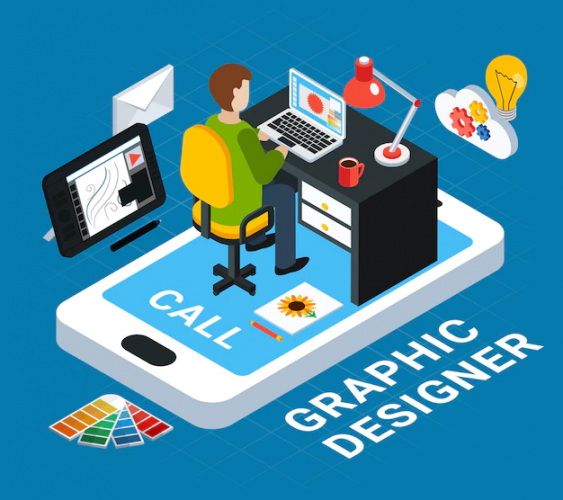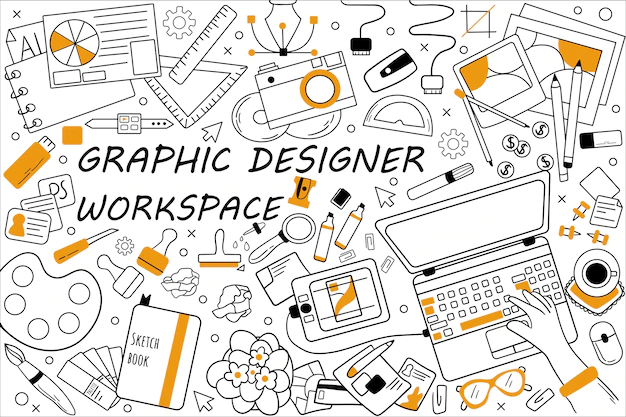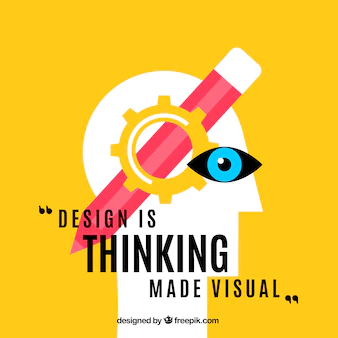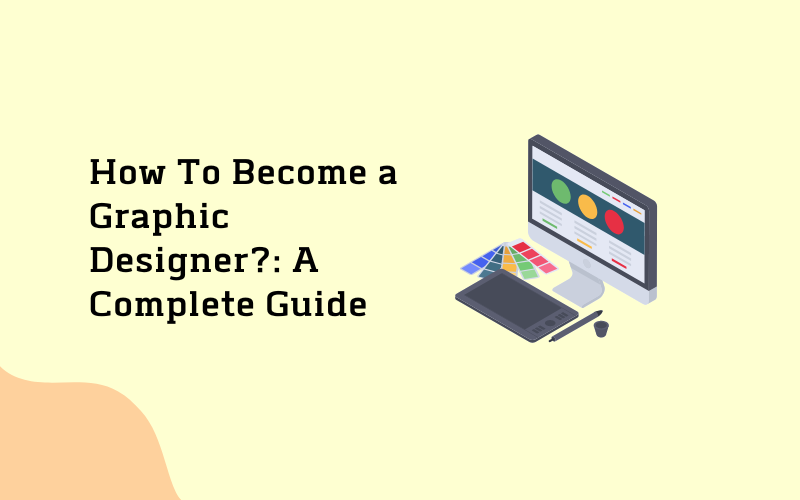
Graphic designers are the storytellers of brands, companies, and products. They use images to tell their tale through a combination of digital marketing strategies that create an engaging experience for customers in competition-fueled markets today.
Graphic design is a very lucrative and in-demand career path. If you’re aspiring to become a graphic designer, there are certain steps you need to take to achieve this goal.
Here, we’ll walk you through the steps you’ll need to take to become a graphic designer. We’ll cover topics such as the educational qualifications, skills necessary, and job prospects for this creative career. Keep reading if you’re ready to pursue a graphic design career.
A Graphic Designer Job:
Graphic designers are in charge of creating innovative, attractive visuals that convey ideas and product descriptions or brand value to the audience. They do this by using their skill with graphics, color schemes/compositions, etc., which can be anything from logos to posters advertising an upcoming movie release.
Companies often hire graphic designers to create innovative marketing visuals or brochures for their new products. They either work as part of a team in a digital marketing firm or work independently on projects requiring them to work part-time or full-time.
Graphic designers are often the first visual representation of a brand, and their work can help to convey an idea or message quickly. They do this through a creative process that captures attention in static images and dynamic motion graphics.
Graphic designers are responsible for designing the visuals that represent your company. A designer can do everything from logos and book covers to web pages or UI/UX designs.
The graphic designer needs to work quickly and efficiently to meet deadlines. They should understand the most complex graphic design software and tools for manipulating text images or animations, among other things.
Basic Graphic Designer Skills:
Creative and innovative people are always in high demand, which is why a designer needs to be creative. Completing an advanced degree program or course can give you that edge.
Creative Skill:
Creativity is a vital tool for designers of all levels. It’s not only about creating interesting designs but also telling stories through them that captivate audiences and drive sales. Their skill sets are essential when creating engaging content which leaves customers wanting more.
Communication:
Graphic designers are more than just artists with a paintbrush. They’re storytellers who use graphics and other elements to tell their client’s brand or product’s tales in an engaging way that will captivate audiences of all ages.
Presentation Skills:
Graphic designers are responsible for taking directives from their clients and engagingly presenting them. They must be skilled enough to efficiently deliver the customer’s needs while meeting audiences’ expectations with unique requirements.
The final aim of this profession is to ensure that your client’s message gets across loud & clear so they can make connections, which ultimately increases brand awareness.
Basic Coding Skills:
Learning basic HTML can help you in your future career as it teaches the secret work of making websites. Learning basic Python or Java will give you even more insight into behind-the-scenes when creating digital content.

Freepik
Types of Graphic Designers:
Graphic Designers have a vast array of opportunities, depending on their preferences. They can work as an in-house designer for one company/brand or choose the more lucrative route and become freelance designers working with many different clients at once.
In-house Graphic Designers:
Graphic designers who work for an established brand or company tend to have various general design skills they can use in any project. They might be asked, for example, to create new marketing campaigns and compile annual reports on behalf of their employer, depending on how large the creative team is within this particular organization’s business model.
In-house graphic designers often work with other teammates) but can also handle all tasks by themselves if necessary. It depends on what kind of mood boards were made when hiring them. Based on Payscale’s research, Graphic Designer in the U.S. and Canada earn around $46,000 a year on average.
The work environment of in-house graphic designers is traditional, with steady paychecks and regular hours. They need to know the brand they are working on, including its design style and audience demographics. These individuals think long-term while designing ideas or strategies that will benefit their employer if done correctly.
Freelance Designers:
Freelance Graphic Designers are more than just artists; they’re entrepreneurs who run every aspect of their business, from designing work to managing clients and issuing invoices. These freelancers specialize in various projects with different industries; they typically have many satisfied customers who will happily recommend them for future jobs if you ask nicely.
The flexibility of freelancing makes it possible for graphic designers to work anywhere in the world. You can create your project schedule with clients who may be interested in only certain types of design work or at different times throughout each week/month, depending on their needs.
Graphic designers who are freelance need to devote time not only to doing graphic design work but also to marketing themselves and handling administrative tasks. Freelancers always seek out new clients, which means they will be competing with other Designers for projects sometimes. The pay can vary depending on what type of project. With a self-employed status, designers can earn up to $20K more per year than those working in other setups, according to Payscale.
Agency Graphic Designers:
Graphic designers at agencies have a wide range of experiences. They work with clients on short-term campaigns and tend to be more fast-paced than regular graphic design jobs, where people typically don’t change brands very often (or ever). Agencies also allow you the opportunity for freelance opportunities if your skills are specialized enough.
Graphic designers at a company have the difficult task of not only designing but also marketing their work. Having many graphic design projects coming through a design agency means each designer must be versatile to meet the needs of every customer.
Agencies are the best place to get a taste of what design is all about. You can learn from established professionals and work alongside other talented designers on your first job day.

Freepik
How to Become A Graphic Designer?
Graphic Designers need the right skills and exposure to succeed. Below is a step-by-step guide:
Understanding the Basics of Graphic Designing:
The Graphic Design field is an art form that takes shape and tone language to create messages, logos, or advertisements. Aspiring graphic designers need to understand these fundamental principles and apply them in their designs to become successful professionals one day.
A good design requires expertise in applying theory and design principles of aesthetics and the ability to connect with your audience by incorporating textiles, graphics, or animations that meet their needs.
Enroll in an Online Graphic Design Course:
Enrolling in a Graphic Designer course to enhance your abilities in this area is recommended. Designers just starting have many options for getting their foot in the door. You can take graphic design courses online that offer great graphics programs.
Graphic design courses teach the fundamentals of the graphic design process and improve your skills by providing some mock projects. In addition, many institutions offer various tools for designers, like UX principles or website development techniques that help in improving their work output significantly.
A certificate from an accredited online course will show off your graphic design skills to potential employers.
Get to know about Graphic Design Tools:
Once you enroll in a Graphic Design Course, you must learn the basic graphic design tools. The designers use a variety of tools to help create their designs.
Graphic designers who are looking to break into the field of animation and computer graphics should consider learning Adobe Creative Suites. This software includes Adobe Photoshop, Illustrator, InDesign, and programs like InDesign, which are used for designing print advertisements.
Work on Small Projects:
After learning the basics of design theory, the next step is to work on your self-assigned project. This will allow you to use what you’ve learned and get more experience under your belt before tackling larger, professionally designed pieces.
Working on real projects and getting experience will help you learn more about what kind of design works well for different industries. Working with local non-profits or brands can let your creativity shine while giving back. Design and create your logos from the ground up or redesign existing brands. This will give you experience with all that knowledge acquired so far.
Create a Stunning Portfolio:
A professional portfolio is a vital part of any Graphic Designer’s identity. It should be both professional and personal, emphasizing quality over quantity. A strong one will give you an edge in job interviews, so make sure it showcases your best work.
It’s important to select work that demonstrates your design skills and interests. Your graphic design portfolio is your first impression of yourself as a designer, so it should show what makes you unique.
Conclusion:
The field of graphic design is interesting and versatile and can be applied to many different things. It is important that you do your research on graphic design and understands what it entails if you are considering the career. Many online platforms offer graphic design programs, so finding one that fits your needs should be relatively easy. Using this guide, you will have access to all the information you need to become a graphic designer.
